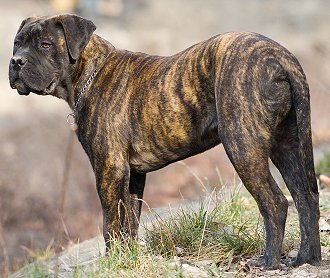The Bullmastiff is a type of pet dog that has existed for centuries. Their origin can be traced back to Great Britain and Ireland, where they were used as guard dogs. They are large, muscular dogs with broad heads and enforcing existences. They have a double coat: the outer layer consists of coarse hair that's black, brown or red in color. The undercoat is dense and soft, and is available in lighter colors such as white or yellow. Their eyes are almond-shaped, and generally brown in color; however, some can have blue or amber accents rather. Whether you're interested in adding a Bullmastiff to your household or simply wish to know more about this type, you've come to the best location! Keep reading to discover everything you ever wished to know about the Bullmastiff.
Where Does the Bullmastiff Come From?
Bullmastiffs have actually been around because the 17th century in Great Britain and Ireland; however, their specific origins are rather unclear. There are several theories surrounding the type's production, however none of them are concrete. One theory is that they descend from the old English Mastiff, which was crossed with the Old English Bulldog. Another theory is that they are a cross in between an ancient Terrier and a Bulldog, which is likewise the theory most extensively accepted. The Bullmastiff was bred as a watchdog, and early owners mainly utilized them to safeguard livestock. They were likewise used as hunting dogs, and were good for tracking large video game like deer or boar. In the 19th century, the type was introduced to the United States, where it was quickly taken up by sportspersons and farmers.

What is the Purpose of the Bullmastiff?
The Bullmastiff's primary purpose is as a watchdog. They are really friendly and social, however they also have a extremely challenging presence. Bullmastiff Breed and strength make them perfect for defending against burglars. They are likewise great with children and can frequently be found in households with young kids. Bullmastiffs likewise make good companions for the elderly, as they are extremely patient and calm. They are also utilized as service canines, as they have a extremely gentle character and can be trained to help in several methods.
Bullmastiff Care and Grooming Requirements.
The Bullmastiff is an typical shedder, producing hair that is long and coarse. They shed their coat two times a year, which will need you to vacuum regularly and/or tidy your house more regularly. Bullmastiffs have reasonably low grooming requirements. You'll require to brush their coat routinely to prevent matting. They likewise require to be bathed and brushed frequently, though you'll want to beware to prevent tangles in their coat and make certain to be mild around their ears and eyes. Bullmastiffs have relatively delicate skin and for that reason might be vulnerable to typical dog conditions like fleas, ticks, and yeast infections. They are also large canines, and for that reason vulnerable to joint problems as they age. You'll need to be extremely cautious when they're young puppies to avoid injuring their joints, especially while they're growing.
Bullmastiff Behaviour and Personality.
The Bullmastiff is a very gentle, patient type, who loves children. They are very loyal, and make excellent companions for seniors as they are calm, friendly and very tolerant of other animals. They are not guard dogs by nature and are most likely to lick burglars than bark at them. Bullmastiffs are a relatively quiet breed, however they do like to shout. If you're residing in an apartment or condo, you'll most likely wish to train this out of them at an early age. Bullmastiffs are an exceptional choice for first-time dog owners, as they are very low-maintenance and normally do not require much training. They don't bark excessively and enjoy being around people, making them a fantastic suitable for households with children.
Bullmastiff Health Issues.
The Bullmastiff is a really hearty type and generally stays healthy. Nevertheless, they are prone to a couple of health conditions, consisting of hip dysplasia, elbow dysplasia and gastric torsion. All of these conditions, and others, can be avoided through accountable breeding. Before purchasing a pup, make certain that their parents are certified as disease-free. You ought to also watch out for other indications of illness such as excessive shivering, excessive panting, lethargy or loss of appetite.
Bottom line.
The Bullmastiff is a really mild and patient type, who is fantastic for households and seniors. They delight in being around people and don't require much training, that makes them an outstanding option for newbie dog owners. They are incredibly loyal, and make excellent guard dogs due to their large size and enforcing existence. They are a hearty, healthy type, and you can anticipate to have them around for several years.
Source: https://www.akc.org/dog-breeds/bullmastiff/

